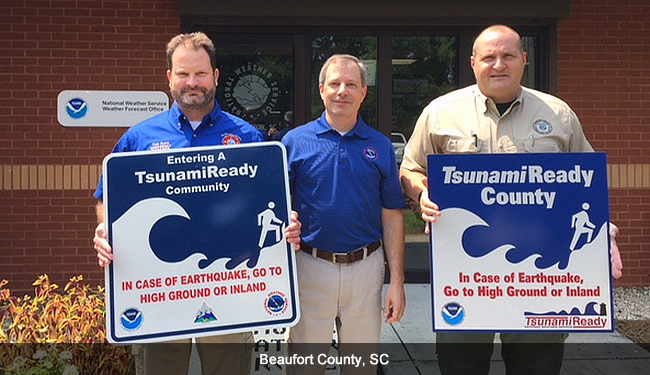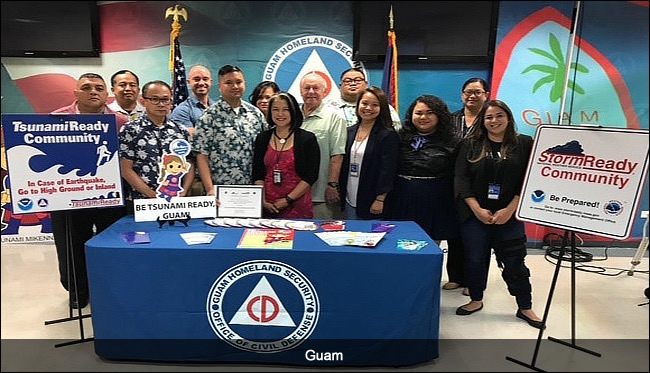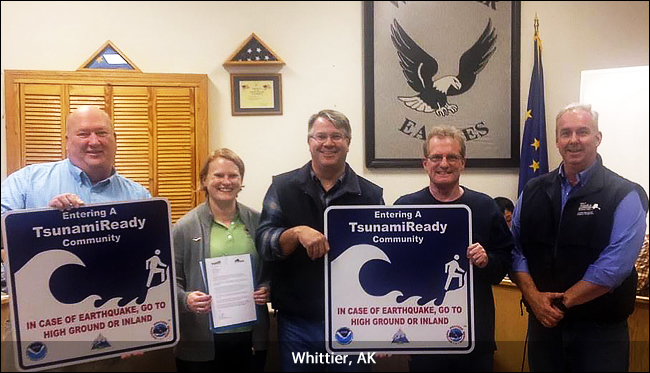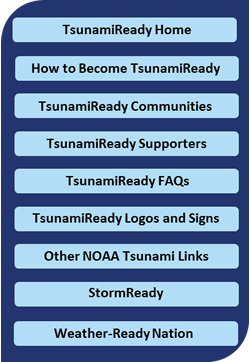     |

 |
In order for the National Weather Service (NWS) to recognize a community as TsunamiReady, the community
must have implemented the activities established in the TsunamiReady Guidelines. These activities include:
In 2015, the NWS approved a new set of TsunamiReady Guidelines:
The TsunamiReady program is implemented by local NWS Weather Forecast Offices in coordination with state/territorial National Tsunami Hazard Mitigation Program partners. Representatives from the forecast offices are available to help emergency managers (or other officials tasked with emergency management responsibilities) understand and meet the guidelines, identify gaps and resources to fill them and work through the application process. To begin the process of becoming TsunamiReady, review the guidelines and contact your local NWS Weather Forecast Office.
To learn more about how to use the guidelines to become TsunamiReady or renew your TsunamiReady recognition, take the TsunamiReady: Guidelines for Mitigation, Preparedness, and Response online training. This training is designed to equip community officials and other interested parties with strategies for streamlining guideline implementation. It includes numerous examples of efforts taken by communities and tips for garnering support and fitting the activities into existing all-hazards planning. The training is free, but registration is required.